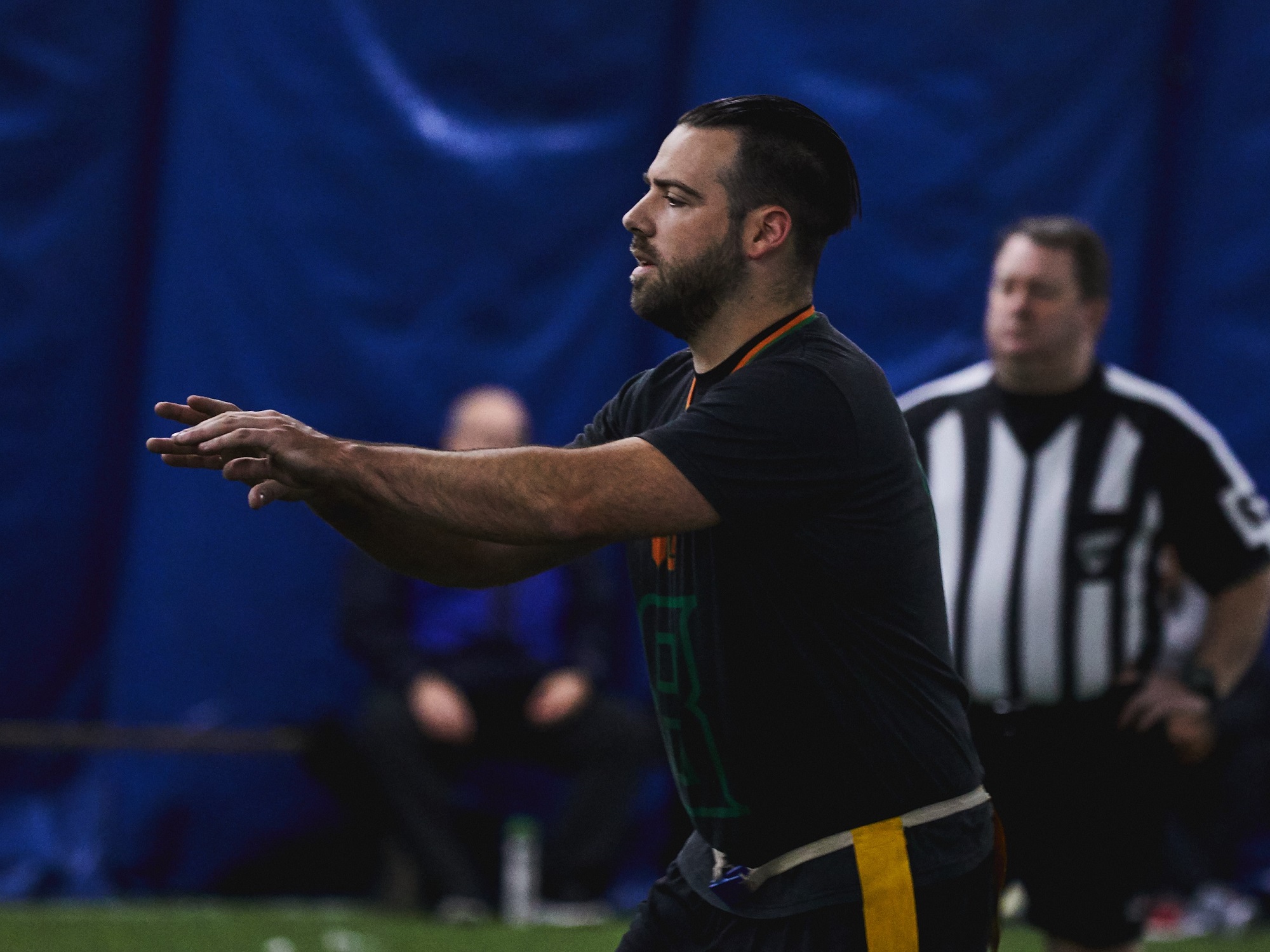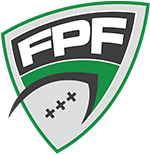Behind Enemy Lines: Offensive Pass Interference & Pick Plays

Hello and welcome back for another edition of Behind Enemy Lines. Over the course of the last couple of weeks, quite a few players have referenced the previous articles, sometimes in protest to calls and non-calls. It makes me happy to hear “You have to call that, you just wrote an article about it”… that means you are reading this stuff! I mean, it doesn’t mean that the play is what we wrote about, but it’s nice to get responses from fans – even though they are typically aggressive in nature.
Ok, on to this week’s topic, offensive pass interference (OPI). This has got to be the most controversial topic in all of FPF. The instances of OPI are few and far between, but the helpless claims from defenders pleading for the call are quite frequent. Let’s see if we can explain a little bit about OPI and clarify some of the common issues around the penalty.
For starters, we stated that DPI can only happen when the ball is in the air, otherwise the penalty is illegal contact on a receiver. This is not true on the offensive side of the ball, and OPI can be called even if the foul occurs prior to a pass being thrown. Other than this difference, OPI and DPI share a lot of similarities. Much of what we said a defender cannot do, a receiver cannot do to a defender. While rarer, a receiver cannot restrict, redirect or impede a defender with favorable position who is trying to play the ball. A receiver cannot play through a defender in an effort to catch the ball. And probably the most common instance of a called OPI, a receiver cannot extend his arms to push off a defender to either 1) create separation or 2) maintain existing separation with a defender. Each of these would be examples of OPI.
Let’s talk briefly about push-offs. A receiver cannot extend one or both arms into a defender to create space. We all know the traditional version of this, where the receiver has run a fly route which is well covered and as the ball is coming in the receiver extends his arm allowing for an uncontested play on the ball. This is obviously illegal unless you are Randy Moss. There are more subtle versions of this, though, such as when a defender is closing in the receiver maintains the separation they have by extending their arm or arms out to keep the defender at a distance. This is also illegal. And finally, on a break or cut, receivers sometimes engage contact in the DB to get the defender going to the wrong way and direct the DB away from the route they are running. If there is sufficient contact that the officials deem that the defender was impeded or re-directed, a foul for OPI will be called. The clues officials look for are obviously extension of one or both arms – without extension it is difficult to suggest that the contact materially impacted the defender’s ability to cover the receiver.
Now onto the fun part – “pick plays”. Pick plays are considered OPI, and are a rare circumstance where pass interference is called outside of the target area for a pass. It is illegal for a receiver to run and make contact with a defender who is attempting to cover a different receiver. Both elements must be true for a pick play to be called. There must be contact (forcing a DB around a receiver is not a penalty) and it cannot be related to the defender that is covering that receiver. If a receiver initiates contact on the defender that lines up in front of them, refer to the previous paragraph for what could fall under the OPI categories for this type of action. It is important to note, however, that as in the case of DPI covered in our last article, pass interference penalties are all about positioning and the right to occupy space if you have gained it and held it first.
To illustrate the point, how about a few examples. First, the bread and butter play of FPF. The slot receiver has a defender lined up directly in front of them, and on the snap of the ball pushes up the field and stops right in front of that defender. Meanwhile, the outside receiver runs a slant underneath and catches the ball because the defender is hindered by the slot receiver’s route. This is a Legal play. The reason this is legal is because the defender is lined up directly in front of the receiver, and is likely very happy to have such great coverage of the hook – that is until they see the slant as more of a threat. And more importantly, the receiver is entitled to occupy that space. The receiver can run right up to the defender and stop. The receiver cannot try to occupy the space of the defender, but they certainly do not need to yield that space to the defender. Each have earned their territory legally, and it is excellent play calling to use that to the offense’s benefit and take advantage of a traditional 3-2 or 2-3 defense. We are often asked by defenders “well how am I supposed to defend that, then?” The answer to that is one that you don’t want to hear, but it’s “design a better defense to cover that kind of play.” But in all seriousness, a receiver can run a straight line, the defender would have to read the play and jump on the slant while avoiding the receiver in this case. Does this make sense? So, running right at a defender and stopping in front of them, creating space for another receiver is legal.
Let’s continue and clear up a few other misconceptions. The receiver does not need to turn back to the quarterback to look for the ball. The receiver does not have to make it look like they are running a route, they can just run out and occupy space. It is ILLEGAL, however, for that same receiver to move into the defender’s way if the defender realizes what is happening and tries to go around the receiver. In other words, the receiver can’t block the defender. But that initial “rub” route is perfectly legal regardless of what direction the receiver is facing and what their intention is.
Scenario 2: Both the slot receiver and the wideout have defenders in front of them. The wide receiver slants in immediately, and the slot receiver runs a slant route over the top of the wideout. In doing so, however, the slot receiver and the defender trying to jump the slant, collide. This is illegal and is OPI for a pick. Both criteria are met, in that there is contact, and that contact is with a defender covering another receiver. In this case, yes, the slot is running a route, and may even have collided with the defender accidentally. Unfortunately, it is still illegal. Think of a route runner in this instance like the rusher and the center interaction. If the defender has an established route to the receiver that they are covering, then the slot receiver needs to avoid them.
And finally, the taking up space example. Again, both receivers have a defender in front of them. The inside receiver runs a 7-yard hook and is stationary. Meanwhile, the outside receiver runs a 5-yard in route, and as the defender aggressively jumps the in, takes an angle that leads directly into the back of the stationary inside receiver. This play is Legal. The difference between scenario 2 and 3 is that in 2, the slot receiver is moving, and therefore has not laid claim to any position on the field and must avoid the defender. In scenario 3, the slot receiver is stationary and has established that position on the field, and therefore the defender now has the onus to use space not occupied by that player.
I hope that clears up what a pick play is. If you are a defender and line up in front of a receiver and that receiver stops in front of you, not allowing you to do your job – I am sorry but you can plead and beg for a call but that is just good route running. If you are a receiver and are running an out route and accidentally collide with a defender trying to get to the slant your team is running, you are going to get called every time so keep your head up!


